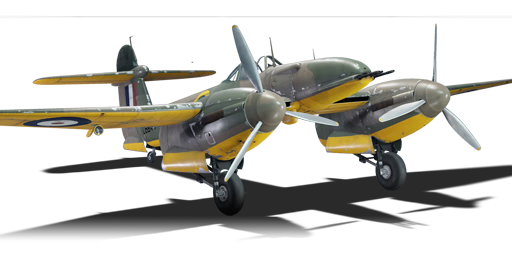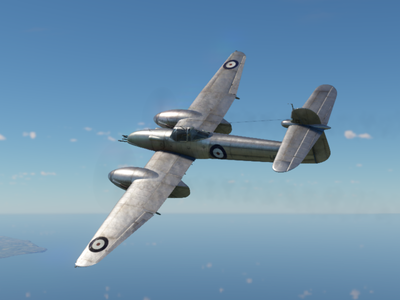

Aviation
Whirlwind P.9
III
Rank
AB
4.3
RB
3.7
SB
4.3
Battle rating
Great Britain
Research country
Fighter
Main role

Premium vehicle
Status
General information
The Whirlwind P.9 is a gift British twin-engine fighter. This aircraft was introduced in Update 1.77 "Advancing Storm" during the 2018 World War Two Chronicles. It was later re-released during Update 1.91 "Night Vision" as a reward for the 2019 Operation "Shipyard" event.
Whirlwind P.9, an experimental pre-production vehicle, is the direct ancestor of the British Whirlwind Mk I heavy fighter. Development of the aircraft began in 1937 and the aircraft in this series had plenty of time to fight against German aircraft and ships during the Battle of Britain.
Where to purchase
Camouflages
Collections
Game roles
Air Defence fighter
Game roles
Fighter
Operator country
Great Britain
Manufacturers
Westland
Vehicles by updates
Update 1.77 "Advancing Storm"
Vehicles by updates
Update 1.91 "Night Vision"
Vehicles by events
Chronicles of World War II (2018)
Vehicles by events
Operation “Shipyard” (2019)
Flight performance
Max speed
at 4,876 m
580542601559 km/h
Rate of Climb
1512.218.212.2 m/s
Turn time
2325.121.924.2 s
Max altitude
9,144 m
Takeoff Run
650 m
Landing
flaps
flaps
Take-off
flaps
flaps
Combat
flaps
flaps
Air
brake
brake
General characteristics
Crew
1 person
Engine
Length
9.8 m
Wingspan
13.7 m
Wing Loading
204 kg/m²
Weight:
Base weight
4.234.374.124.34 t
Fuel in main tanks
0.43 t (1h 2m)
Limits:
Max Speed Limit (IAS)
676 km/h
Mach Number Limit
0.75 M
G limit
≈ -5/11 G
Flap Speed Limit (IAS)
L / T / C
265 / 433 / 465 km/h
Gear Speed Limit (IAS)
265 km/h
Offensive armament
4 × 20 mm Hispano Mk.I cannon
Ammunition
484 rounds
Fire rate
600 shots/min
One-second Burst Mass
1.32 kg
| Belt | Belt filling | Armor penetration (mm) at a distance: | |||||
|---|---|---|---|---|---|---|---|
| 10 m | 100 m | 500 m | 1000 m | 1500 m | 2000 m | ||
| HEI/SAP-I/T | 22 | 20 | 14 | 9 | 6 | 4 | |
| AP-T/HEI/SAP-I | 37 | 35 | 25 | 16 | 10 | 7 | |
| AP-T/T/HEI | 37 | 35 | 25 | 16 | 10 | 7 | |
| AP-T/SAP-I/HEI/AP-T | 37 | 35 | 25 | 16 | 10 | 7 | |
| HEI/HEI/SAP-I | 22 | 20 | 14 | 9 | 6 | 4 | |
Economy
Repair cost
AB
919 

RB
3,957 

SB
6,656 

Crew training
10,000 

Experts
210,000 

Aces
700 

Research Aces
790,000 

Reward multiplier
AB / RB / SB
 2 x (75 / 225 / 380) %
2 x (75 / 225 / 380) % 
 2 x 154 %
2 x 154 % 

Premium vehicle
All modifications are unlocked
Flight performance | |
|---|---|
Survivability |
|---|
Weaponry |
|---|
Rating by players
You must play more than 3 battles for the last week and more than 10 battles in a vehicle to rate it.
Like:
16
Flight performance:
Not enough ratings
Survivability:
Not enough ratings
Aerial combat:
Not enough ratings
Ground attack:
Not enough ratings
Balance:
Not enough ratings
Tips & Tricks
This space is currently empty
Do you know any interesting vehicle features?
Loading...
No articles about this vehicle yet
Become the first author and get rewards!
Write a guide, tell about interesting historical facts, make a tutorial or simply an interesting post.
No more content
